And now, a very special category in the 2011 Swamplot Awards for Houston Real Estate is open for voting! What makes it so special? Well, the word “special” is in the name of the award, for one thing. It’s our Award for Special Achievement in Sprawl. Are you ready to vote for the winner?
 The official nominees in this category — as nominated by Swamplot readers — are listed below. Now’s your chance to vote — which you can do up to 4 times if you follow our rules: once in a comment below, once in an email to Swamplot, once using Twitter, and once by scribbling on the wall of Swamplot’s page on Facebook. That not enough for you? Then recruit your friends to vote, too! But make sure you get all the votes in by the deadline: 5 pm on Tuesday, December 27th.
The official nominees in this category — as nominated by Swamplot readers — are listed below. Now’s your chance to vote — which you can do up to 4 times if you follow our rules: once in a comment below, once in an email to Swamplot, once using Twitter, and once by scribbling on the wall of Swamplot’s page on Facebook. That not enough for you? Then recruit your friends to vote, too! But make sure you get all the votes in by the deadline: 5 pm on Tuesday, December 27th.
And now, the official nominees for the Award for Special Achievement in Sprawl:
***
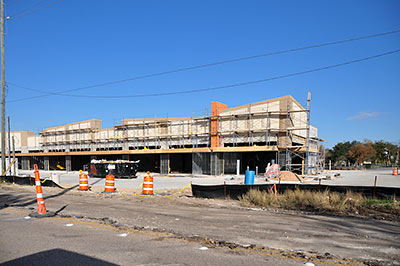
1. Houston’s Reverse Sprawl. “Outside the Loop, developers are at last creating big new mixed-use redevelopment projects (such as CityCentre) and even fitting urban-style grocery stores into older ones (the new Whole Foods coming to Blvd. Place near the Galleria). Meanwhile, it seems every time a large parcel of land opens up inside the Loop it gets filled with strip malls, Walmarts, and suburban-style grocery stores. The city has revived its plan to allow dense residential development outside the Loop; it’s simultaneously been encouraging suburban-sprawl-style development inside the Loop with free money for infrastructure upgrades through 380 agreements.”
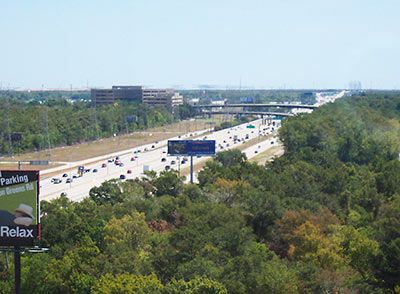
2. Proposed Expansion of Houston’s “Urban Area” from the 610 Loop to Beltway 8. “The ‘urban’ designation in the city’s development ordinance allows developers to build denser neighborhoods with smaller lot sizes. This new approach would keep outside-the-Beltway Greenspoint and much of Westchase suburban, but the little single-family neighborhoods that are near them but inside the Beltway would become urban.”
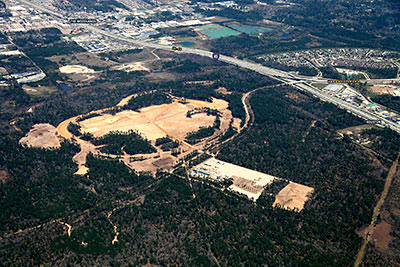
3. New ExxonMobil Corporate Campus, Spring. “For trying to create yet another ‘energy corridor’ — many miles away from the others.”
“Pulling all those office workers from in-town sites like the Bell St. tower downtown, the research center on Buffalo Speedway, and the offices at 290 and Dacoma and forcing them to slog through traffic on an already crowded I-45 — that’s truly sprawl genius.“
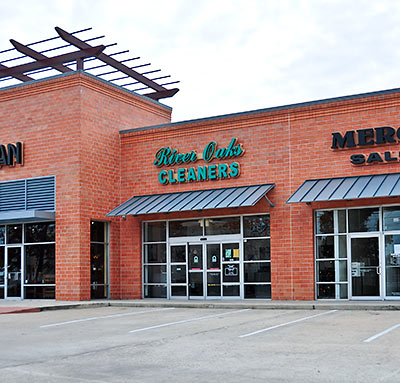
4. The Sprawl of “River Oaks.†“Why is ‘River Oaks’ part of the name of so many shops within a 10-mile radius of Inner Loop Westheimer? I get it, River Oaks is fancy. But the guy checking the air in my tires and putting extra starch in my collar isn’t. I can forgive the geographically challenged doggie daycares and florists who co-opted the RO name; I just don’t get the dry cleaners and oil-change places doing it.”
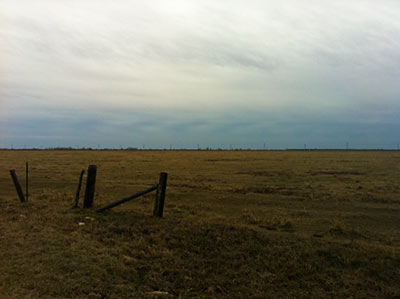
5. Segment E of the Grand Parkway, now slicing through the Katy Prairie. “The ‘one road to ring them all’ just took out an entire Chinese army this year. How’s that for the power of sprawl? Here’s to Houston, for continuing to fund road projects where people do not live, destroying entire ecosystems in the process.”
“Like a zombie from a bad movie: Each time it looked like this project was really dead, it rose up again — undead from beneath the Katy Prairie.”
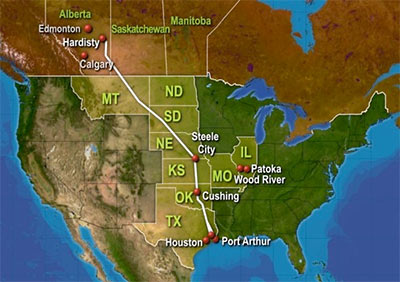
6. Proposed Keystone XL Pipeline. “Would sprawl 1,700 miles from Calgary to Houston, carrying crude oil from Canadian tar sands here for further refinement. By comparison, it makes the Grand Parkway and the new Exxon Campus seem close-in.“
Okay, Houston sprawl connoisseurs! Which one of these fine efforts truly deserves the Award for Special Achievement in Sprawl?
- How To Vote in the 2011 Swamplot Awards for Houston Real Estate [Swamplot]
- Swamplot Awards Ballots 2011 [Swamplot]
Photos: Candace Garcia (Heights Marketplace, River Oaks Cleaners), Flickr user FreewayDan, Swamplot inbox, KUHF News, NewsHour


#4, River Oaks!
#1, because both kinds of snobs (urban, suburban) are getting a nice taste of how the other half lives.
5. Segment E of the Grand Parkway
How many more new ring roads can we build, while the existing roads connecting the different rings are so horrible (except for the new I-10)?
PS, in case anyone missed it, the River Oaks Cleaners pictured above is situated on Washington Ave.
#1. It is completely silly.
Grand Parkway — YUK!
Since Exxon’s new campus (located at the future interchange of the Grand Parkway and I-45) was the impetus for TXDoT taking financial responsibility for the entire Grand Parkway project, I think that #3 kills two endangered yellow-crested sprawlbirds with one stone. …and perhaps a few thousand actual birds, too.
“The ‘one road to ring them all’ just took out an entire Chinese army this year. How’s that for the power of sprawl?
Thanks for the hat tip, you know where my vote stands (errr…drives).
#4.. River Oaks everythang
these are all very demoralizing, i am withholding my vote!
It’s gotta be the Grand Parkway.
#2, as it will make opening my future property tax bills something like the dentist scene in “Marathon Man”.
#5 – Opens area to more homes a million miles from the city, so people can by them cheap and then bitch about the traffic on 99, 290, 59, 8, 610……
The grand parkway, of course!
Easy one. Grand Parkway. Build it, and they will sprawl.
ExxonMobil would be a shoe in, but Houston is already so sprawled to the north that the ExxonMobil campus is practically urban in-fill.
#5. Because I honestly don’t believe that another ring road will have that much of a positive effect on traffic in this town. All it will do is encourage more people to move much further out and having to drive in. Not to mention the environmental damage. Just ridiculous.
The River Oaks name sprawl. I was trying to create a category for just this type of thing. It’s so bad, I’m sure the any apartments built near near Exxon’s new campus will be called The Montrose Heights at River Oaks. Seriously, let’s rein it in people!
The Grand Parkway, for its sheer persistence, it simply will get built. The reason is not because anyone wants it, but because that is what they are, just like the inevitability of time, so too are our freeways. Surely it is time to start planning the next road, which will make Sealy, Hempstead, and Navasota the new suburban frontier.
#5 takes the cake. And the prairie.
This is too tough. I abstain.
@ Lake of Tuscan: I hate to be the one to break the news, but the next outer loop beyond Grand Parkway is already being planned. If you look at the land plan for Cross Creek Ranch, there’s a big right of way built into the western portion of the development. It is right close to the proposed terminus of the Westpark Toll Road and roughly aligns with FM 2855 to the north and Spur 10 to the south. Some of the economic development corporations and chambers of commerce out there have even begun tracing its route on their planning maps.
Grand Parkway, #5.
#3, because as TheNiche says, it was the Exxon campus that was one of the deciding factors that caused the county to go ahead with Segment E. So you could say the new Exxon campus was a cause of sprawl, and the Grand Parkway was a result of mitigating the sprawl.
I also vote for #5, Segment E of The Grand Parkway.
[I’d like to include in my nomination all the other un-built segments.]
.
I truly believe Houston should ‘rein it in’ and insist on smart & dense growth.
How many cities of Houston’s size would kill for our space?! Let’s deliberately capitalize on it to make Houston a spectacularly livable city, rather than just a ring-road metropol-shit.
I also support zoning because without it the City doesn’t LEAD; Without it, the dog is wagged by its tail.
A growing trend in restaurants is the adjacent herb and veggie garden. Another is communal gardens with extra produce going to food pantries.
Houston is positioned to follow these healthy, good-food models and be a uniquely livable modern city, and, we shouldn’t squander the opportunity by encouraging, well, SPRAWL.
Number 1!
Argh! #1 because it’s what saddens me the most.
#5. Which is due to #3. I think it will have the most detrimental and irreversible downstream effects, literally.
My vote goes to number 5.
Number 1.
#5
Voting for Segment E for Exxon! #3 and #5 tied!
#5.
#5 The money would be better spend to improve the 290 (I don’t live along 290 anymore, but I did). With more and more neighborhoods in the NW this road is a nightmare. I cringe anytime when I have any business that would take me there = pure stress and road rage.
@movocelot I agree. Every time I drive somewhere inside the 610 I keep on thinking, why all these abandoned (and not abandoned, but fugly ones), junkyards and the like have to be there? Can’t we bring homes closer to where people work and move these eyesores somewhere else? I’ve been living in Houston (and in the US) for over four years now and I still keep wondering…
@ SevenFourteen I agree. I live in 77008 zip code and every time I get a new client and they say they live in the Heights/Montrose/West-U etc I ask for the closest intersection. I’ve been misled so many times ;)
Are you kidding…economic self interest votes for the Grand Parkway!
#1 is kinda driving me crazy
@Kasia: What junkyards?
Last I looked the entire western half of the inner loop is pretty solidly built-out. Land values are high. Developers are adding density but some of the citizens don’t *want* that density (see: every Heights neighborhood preservation proposal ever).
Sure there’s junkyards over in the eastern half, but that’s to be expected. There’s this thing called the sectoral model, areas in the same direction away from downtown tend to be more like each other than areas on opposite sides. In Houston’s case that’s reinforced by the land uses, there’s more pollution in the eastern half because of all the heavy industry that clings to the ship channel.
That’s the other thing, too. Houston isn’t a small, postindustrial city like Portland where PhDs drive cabs because they’re there for the “quality of life.” Houston is a big industrial city that still makes stuff. You can’t look at a “cruddy” low-rise industrial or manufacturing district and wish to replace it with trendy lofts, because those industrial districts are a big part of the city’s prosperity.
The oil company office jobs could choose to locate *anywhere*; they choose to locate in Houston because it’s close to where their industrial operations area.
@38 You slipped into a non sequitur. None of the factors you cite actually require (or even favor) sprawl; it’s what you get when a city grows while specific policy decisions are made.
#3
#5